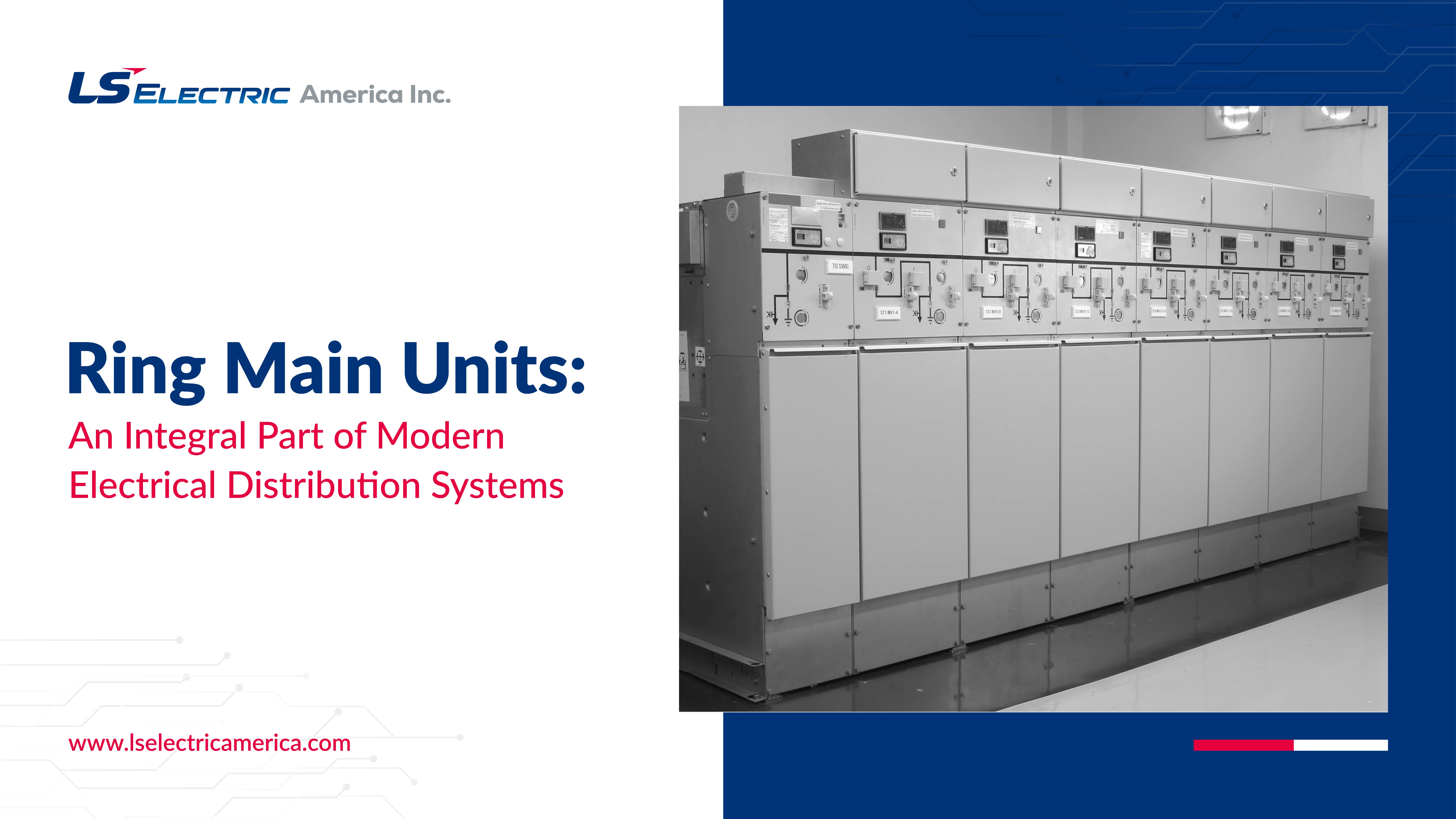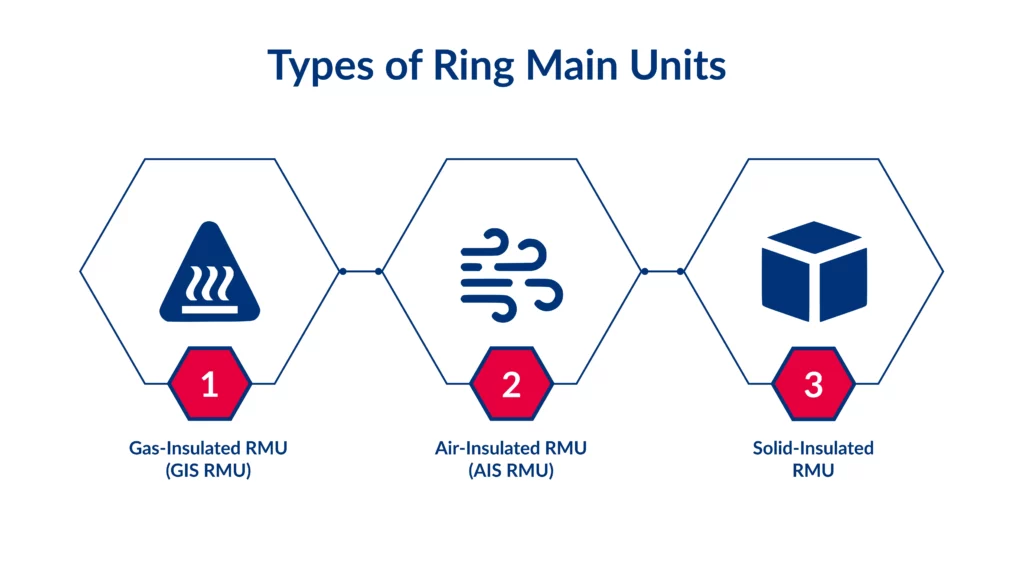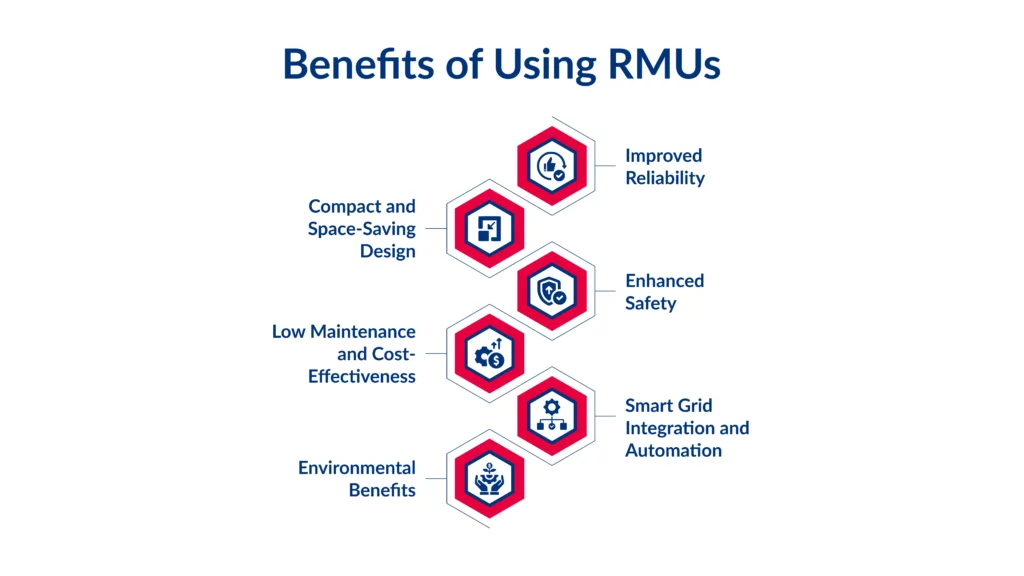Power outages and electrical failures can bring businesses to a standstill, disrupt entire industries, and create significant inconveniences in daily life. A stable and reliable power supply depends on an efficient distribution network that minimizes downtime and ensures seamless operation. This is where Ring Main Units (RMUs) play a vital role.
RMUs are compact, fully enclosed switchgear designed for medium-voltage power distribution networks. They enhance reliability, improve safety, and support the growing demands of modern smart grids. Their ability to quickly isolate faults and restore power helps reduce disruptions, making them indispensable for urban infrastructure, industrial plants, and commercial facilities.
With the increasing need for efficient, automated, and resilient power distribution, the global RMU market is on a strong growth trajectory. It is valued at approximately $2.7 billion in 2022 and is projected to reach $4.8 billion by 2032. This surge reflects the rising demand for smarter, more dependable electrical networks worldwide.
This blog will discuss RMUs, how they work, their benefits, and their real-world applications.
What is a Ring Main Unit (RMU)?
A Ring Main Unit (RMU) is a crucial component in medium-voltage distribution networks ranging from 11kV to 33kV. It ensures efficient and reliable power distribution. RMUs are widely used in urban areas, industries, and commercial buildings where uninterrupted power supply is essential.
An RMU operates within a ring-type power distribution system, allowing electricity flow in multiple directions. If one network section fails, power is automatically rerouted through an alternative path, preventing outages and ensuring continuous supply.
An RMU is a compact, enclosed switchgear that integrates several essential components. These include:
- Load Break Switch (LBS) for safe circuit operation.
- Circuit Breakers to protect against faults.
- Fuse Protection to prevent overloads.
- Earthing Switch for safety during maintenance.
RMUs are available in gas-insulated, air-insulated, and solid-insulated designs. They are used in power utilities, industrial plants, renewable energy grids, and innovative city projects.
With advancements in automation, modern RMUs now support remote monitoring and smart grid integration. This improves power management and enhances network efficiency. RMUs are crucial in making electrical distribution safe, reliable, and sustainable.
How Does an RMU Work?
RMU operates in a loop or ring configuration, allowing electricity to flow from multiple directions. This ensures that power remains available even if one network section fails. An RMU is connected to two or more power sources, forming a ring network. When electricity is supplied, the load break switches (LBS) and circuit breakers control the current flow. If one power source fails, the RMU reroutes electricity through the alternative path, preventing interruptions.
Significant Operations of an RMU
- Normal Operation
The RMU allows electricity to flow through its circuit breakers and load break switches, efficiently distributing power to connected loads.
- Fault Isolation
If a fault occurs, the circuit breaker trips, disconnecting the faulty section. Power continues to flow through the remaining network, ensuring minimal disruption.
- Restoration of Power
Once the fault is repaired, the RMU is reset to restore regular operation. In automated RMUs, remote monitoring can detect faults and restore power quickly.
Depending on their design, RMUs can be manually or remotely operated. Modern RMUs have intelligent monitoring, automation, and self-healing features, making them essential for smart grids and reliable power distribution systems.
Types of Ring Main Units
Different RMUs are used based on application, space availability, and environmental factors. The three main types are Gas-induced RMU, Air-induced RMU, and Solid-induced RMU. Each type has unique advantages and is selected based on network requirements.
-
Gas-Insulated RMU (GIS RMU)
A Gas-Insulated RMU (GIS RMU) uses SF6 gas as an insulating medium. SF6 is a highly effective insulator that prevents electrical faults. These RMUs are compact, fully enclosed, and require minimal maintenance. They are widely used in urban areas, commercial buildings, and industries where space is limited.
GIS RMUs offer high reliability and long service life. They resist environmental conditions like humidity, dust, and pollution, making them ideal for harsh operating environments. However, SF6 is a greenhouse gas, and regulations encourage alternatives.
-
Air-Insulated RMU (AIS RMU)
An Air-Insulated RMU (AIS RMU) uses air instead of SF6 gas as the insulating medium. It is larger than GIS RMUs but offers a more environmentally friendly option. AIS RMUs are commonly used where space constraints are not an issue.
AIS RMUs are affordable and easier to maintain. They are used in rural power networks, industrial plants, and substations where installation space is available. However, they are more affected by environmental conditions like dust and moisture and require periodic maintenance.
-
Solid-Insulated RMU
A Solid-Insulated RMU uses solid dielectric materials for insulation. It does not require SF6 gas, making it eco-friendly and sustainable. These RMUs are ideal for environmentally sensitive areas where SF6 emissions must be reduced.
Solid-insulated RMUs are compact, reliable, and maintenance-free. They are commonly used in renewable energy grids, underground power networks, and green buildings. With increasing environmental concerns, solid insulation technology is gaining popularity as a future-ready solution.
Each type has its advantages and is chosen based on network requirements.
Benefits of Using RMUs
RMUs offer several advantages that enhance electrical distribution systems’ efficiency, performance, and sustainability. Here are the benefits of using RMUs:
-
Improved Reliability
RMUs ensure continuous power supply by operating in a ring network configuration. This setup allows power to flow from multiple directions, ensuring that electricity can be rerouted through an alternative path even if one section fails. This reduces power outages and downtime, making RMUs essential for critical infrastructure like hospitals, airports, and data centers.
-
Compact and Space-Saving Design
RMUs are compact and enclosed, requiring minimal installation space. This makes them ideal for urban environments, commercial buildings, and industries where space is limited. Compared to traditional switchgear, RMUs provide the same functionality but in a much smaller footprint, allowing for efficient substation and distribution planning.
-
Enhanced Safety
Safety is a significant benefit of RMUs. Their fully enclosed design protects against electrical hazards, short circuits, and accidental contact. Additionally, RMUs use advanced insulation techniques, such as SF6 gas or solid dielectric insulation, to prevent electrical faults. Some models also come with integrated fault protection to detect and isolate issues quickly.
-
Low Maintenance and Cost-Effectiveness
RMUs, especially gas-insulated models, require minimal maintenance compared to traditional switchgear. Their sealed design eliminates exposure to dust, moisture, and contaminants, reducing wear and tear. This lowers operational costs and extends the lifespan of the equipment. Utilities and industries benefit from long-term cost savings with RMUs due to fewer maintenance needs and reduced downtime.
-
Smart Grid Integration and Automation
Modern RMUs support automation and remote monitoring, making them a major component in smart grid development. When fitted with Intelligent Electronic Devices (IEDs), RMUs can integrate with Distribution Management Systems (DMS) for real-time fault detection, remote operation, and predictive maintenance. This improves power efficiency, reduces response times, and enhances grid reliability.
-
Environmental Benefits
With growing concerns about climate change and sustainability, RMUs are evolving to become more eco-friendly. SF6-free RMUs use alternative insulation materials, reducing greenhouse gas emissions. Solid-insulated RMUs further eliminate the need for gas insulation, making them a green alternative for power distribution. These environmentally friendly solutions support sustainable energy distribution and smart city initiatives.
Applications of RMUs
A Ring Main Unit (RMU) is essential to medium-voltage power distribution networks. It is widely used in underground cable systems, industrial plants, and smart grids. RMUs enhance network reliability, safety, and efficiency. Their compact, sealed design makes them ideal for urban and rural installations.
-
Urban Power Distribution Networks
RMUs are extensively used in city power grids to ensure uninterrupted electricity supply. They connect different parts of the network, allowing quick rerouting of power in case of faults. This prevents blackouts and reduces downtime.
-
Compact Secondary Substations
RMUs are commonly installed in secondary substations to distribute electricity efficiently. Their modular and expandable design allows utilities to scale power distribution as needed. They also provide integrated protection systems to safeguard equipment.
-
Renewable Energy Plants
RMUs play a major role in managing power fluctuations on solar and wind farms. They ensure smooth integration of renewable energy sources into the grid, and their smart automation capabilities enable remote monitoring and control.
-
Industrial and Commercial Complexes
Industries, shopping malls, office buildings, hospitals, and airports use RMUs to ensure continuous power supply. Their compact, maintenance-free design makes them suitable for high-demand environments.
-
Smart Grid Integration
Modern RMUs have Intelligent Electronic Devices (IEDs) and communication systems, which allow them to integrate with Distribution Management Systems (DMS) and support smart grid solutions.
Future of RMUs in Smart Grids
Ring Main Units (RMUs) are set to play a crucial role in the future of smart grids, as power distribution networks evolve to become more efficient, automated, and sustainable. With the global push towards grid modernization, renewable energy integration, and smart infrastructure, RMUs will continue to see technological advancements and higher adoption rates.
-
Increased Demand for Smart Grids
The shift from traditional to smart grids is accelerating worldwide. RMUs will be equipped with advanced sensors, automation, and remote monitoring to improve grid efficiency and enable real-time fault detection and predictive maintenance. These capabilities help reduce downtime and enhance grid reliability, making RMUs essential for future power distribution networks.
-
Integration of Renewable Energy
As governments and utilities prioritize renewable energy sources like solar and wind power, RMUs will be adapted to support the fluctuating power loads from these sources. Smart RMUs will facilitate seamless integration of decentralized energy generation, improving overall grid stability and flexibility.
-
AI and Automation for Enhanced Performance
With the rise of AI and machine learning, future RMUs will incorporate self-diagnosing and autonomous operation capabilities. Artificial Intelligence (AI)-driven RMUs will optimize energy distribution, detect potential failures before they occur, and automatically reroute power to minimize disruptions.
-
Growing Market and Regional Expansion
The global RMU market is projected to experience significant growth, with major regions like Asia-Pacific, Europe, and North America investing heavily in smart grid infrastructure and energy-efficient technologies. This expansion is driven by rapid urbanization, transportation electrification, and increasing energy demands.
The future of RMUs in smart grids is centered around automation, AI integration, renewable energy compatibility, and enhanced efficiency. As power networks become smarter and more decentralized, RMUs will remain vital to ensuring a reliable, cost-effective, and sustainable energy future.
Ensure Safe & Efficient Power Distribution with LSElectric America’s RMUs
Power your distribution network with LSElectric America Inc.’s Susol RMU—a compact, maintenance-free Ring Main Unit that provides maximum safety, durability, and efficiency in 12/17.5/24kV/36kV distribution networks.
Why Choose Susol RMU?
- Metal-Enclosed & SF6 Insulated – Ensures long-lasting, maintenance-free performance.
- Superior Safety – Features a fully automatic interlocking system and internal arc withstanding technology for operator protection.
- Easy Installation & Space-Saving Design – Ideal for tight spaces with front-access operation and minimal maintenance needs.
- Smart Grid Ready – Supports remote operation via motorized mechanism and RTU integration.
Our offerings include:
Partner with LSElectric America Inc. today to strengthen your power infrastructure with reliable Ring Main Units (RMUs).








